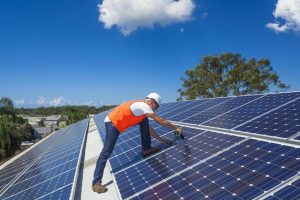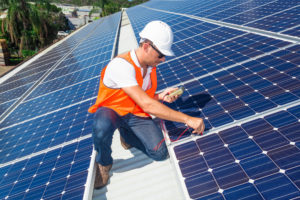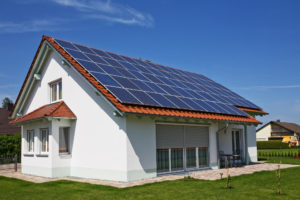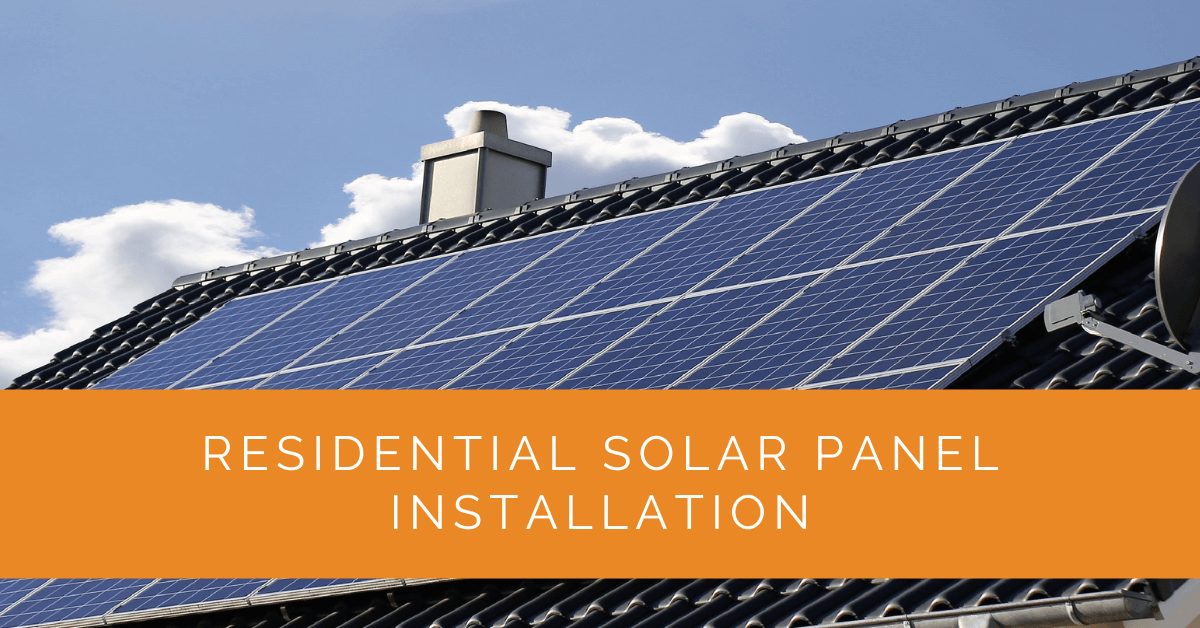Solar energy is one of the fastest-growing renewable power sources in the US. It’s clean, reliable, and can significantly reduce electricity bills. Installing solar panels on your home is not just environmentally responsible—it’s also a smart financial investment. This guide breaks down the residential solar panel installation process step by step, from planning and permits to mounting panels, connecting inverters, and adding optional solar batteries. Whether you’re exploring a DIY project or hiring a professional installer, this article covers the essential decisions, benefits, and challenges.
Contents
- 1 Key Takeaways
- 2 Getting Started with Solar Panels
- 3 DIY vs. Professional Solar Panel Installation
- 4 The Solar Panel Installation Process
- 5 Solar Roof Integration
- 6 Conclusion
- 7 How Much Does Residential Solar Panel Installation Cost?
- 8 How Long Does Solar Panel Installation Take?
- 9 Do I Need to Replace My Roof Before Solar Panels?
- 10 Cost, ROI, and Payback Period
- 11 Frequently Asked Questions (FAQs)
- 12 Case Study: DIY vs. Professional Solar Panel Installation
- 13 Expert Insights From Our Solar Panel Installers About Residential Solar Panel Installation
- 14 Experience Solar Excellence with Us!
Key Takeaways
- Residential solar panel installation involves design, permits, roof inspection, mounting, wiring, and testing. Optional battery storage improves energy independence.
- DIY installation can reduce upfront costs but requires electrical, roofing, and construction skills. Professional installation ensures efficiency, warranty coverage, and long-term performance.
- Solar roofs and integrated panels offer aesthetic appeal and space efficiency, but require regular cleaning, monitoring, and inspections.
Getting Started with Solar Panels
What Is Solar Energy?
Solar energy works by converting sunlight into electricity through photovoltaic (PV) cells. When photons hit the cells, electrons are released, creating an electric current. Multiple panels increase energy generation and reduce grid dependence.
Installing solar panels lowers your carbon footprint while providing predictable, renewable power for decades.
DIY vs. Professional Solar Panel Installation
One of the first decisions homeowners face is whether to attempt a DIY installation or hire a professional solar installer. Each path comes with distinct pros and cons.
DIY Solar Panel Installation
Benefits
- Cost Savings: Avoid labor charges and reduce overall system cost.
- Personal Achievement: Many homeowners find satisfaction in building their own clean energy system.
Challenges
- Technical Skills: Requires knowledge of electrical wiring, roofing, and safety codes.
- Time Investment: Projects can take weeks, depending on complexity.
- Warranty Issues: DIY installs may void manufacturer warranties, leaving you unprotected.
Professional Solar Installation
Benefits
- Expertise: Certified installers handle system design, permitting, and safety compliance.
- Efficiency: Faster installation with fewer risks of costly mistakes.
- Warranty Protection: Keeps equipment and labor warranties valid.
Considerations
- Cost: Labor increases upfront price but often pays off in long-term reliability.
- Choosing Installers: Vet companies carefully—check reviews, certifications, and quotes.
The decision depends on your skills, time, and risk tolerance. For most homeowners, professional installation ensures long-term safety and efficiency.

The Solar Panel Installation Process
Here’s a clear breakdown of the solar installation steps so you know what to expect:
1. System Design and Planning
- Energy Needs: Review past utility bills to size your system correctly.
- Roof Analysis: Inspect condition, shading, and tilt. South-facing roofs are optimal, but east/west can also work.
- Inverter Choice: Decide between string inverters (cheaper, less flexible) or microinverters (higher efficiency with shading tolerance).
2. Permits and Utility Approvals
- Building Permits: Required in most areas to meet safety codes.
- Utility Coordination: Apply for net metering and permission to operate (PTO).
3. Installation Steps
- Roof Mounting: Racking system installed securely.
- Panel Placement: Panels mounted to maximize exposure.
- Electrical Work: Inverters, wiring, and grid connection.
- Optional Solar Battery: Store excess energy for use at night or during outages.
4. Final Inspection and Testing
Inspectors check for code compliance, secure connections, and system output before granting final approval.

Solar Roof Integration
Instead of panels mounted on racks, some homeowners choose integrated solar roofs. These blend solar shingles or tiles directly into your roof for a seamless look.
Benefits of Solar Roofs
- Aesthetic Appeal: Sleek, modern appearance with curb appeal.
- Durability: Solar shingles often outlast conventional roofing.
- Efficient Use of Space: Covers more roof area with energy-generating materials.
Maintenance Tips
- Cleaning: Remove dust and debris regularly.
- Monitoring: Use built-in systems to track output.
- Inspections: Annual checks ensure performance and safety.
Conclusion
Residential solar panel installation offers clean, renewable energy and long-term savings. Whether you choose DIY or professional installation, understanding the process—from design to permits to final testing—is the key to success. Get in touch today for expert advice and customised solar solutions.
How Much Does Residential Solar Panel Installation Cost?
The cost of residential solar panels varies depending on system size, equipment, and installer rates. On average in the US, homeowners can expect:
- System Size: 5kW–10kW is typical for a family home.
- Cost per Watt: $2.50–$3.50 per watt installed (before incentives).
- Total Cost: $12,500–$35,000 depending on system size and complexity.
Incentives such as the federal solar tax credit (30% as of 2025) and state-level rebates can significantly reduce upfront costs. Financing options, solar leases, and power purchase agreements (PPAs) also make solar more accessible.
How Long Does Solar Panel Installation Take?
The full process from contract to commissioning usually spans 1–3 months, depending on permits and utility approvals. The physical installation itself is quick:
- Small residential systems: 1–3 days.
- Larger/complex systems: up to 1 week.
Delays usually come from permits, inspections, and utility interconnection, not the actual panel installation.
Do I Need to Replace My Roof Before Solar Panels?
Before installation, assess your roof’s condition:
- If your roof is less than 10 years old and in good shape, you can usually proceed without replacement.
- If your roof will need replacing soon, it’s best to do so before installing solar panels to avoid costly removal and reinstallation later.
A professional installer will conduct a roof inspection to ensure structural safety and longevity.
Cost, ROI, and Payback Period
Solar panels are an investment that pays back over time. Here’s what most homeowners can expect:
- Average Payback Period: 6–10 years, depending on system size, electricity rates, and incentives.
- Lifetime Savings: $20,000–$60,000 over 25–30 years.
- Increase in Home Value: Homes with solar panels typically sell for 3–5% more.
Solar panels generally last 25–30 years with minimal maintenance, meaning that after payback, your electricity is essentially free for decades.

Frequently Asked Questions (FAQs)
Do solar panels work on cloudy days?
Yes. Solar panels still generate electricity on cloudy days, though output is reduced. High-efficiency panels capture indirect sunlight effectively.
Will solar panels increase my home value?
Yes. Studies show homes with solar installations sell faster and for more—typically 3–5% higher—than comparable homes without solar.
Can I go completely off-grid with solar panels?
It’s possible with solar batteries and sufficient system size, but most homeowners remain grid-connected to balance supply and demand.
How long do solar panels last?
Most panels come with a 25-year performance warranty. They typically last 25–30 years, with gradual efficiency decline of about 0.5% per year.
What maintenance do solar panels require?
Solar panels require very little maintenance—mainly periodic cleaning and occasional professional inspections. Many systems include monitoring to track performance.
Case Study: DIY vs. Professional Solar Panel Installation
The Solar Journey of the Thompson Family: DIY vs. Professional Installation
Background
The Thompson family, residing in sunny San Diego, California, transitioned to solar energy to reduce their electricity bills and their environmental footprint. They owned a typical suburban home with a south-facing roof, perfect for solar panels. Faced with the choice of DIY installation or hiring a professional, they sought advice from Solar Panels Network USA.
Objective
The goal was to determine the most suitable installation approach for the Thompson family, considering their technical skills, budget, and desire for a seamless experience.
Analysis and Consultation
DIY Solar Panel Installation
- Advantages:
- Cost Savings: Mr Thompson, a handyman, was excited about the potential savings of eliminating labour costs.
- Personal Satisfaction: Successfully installing the panels would be a rewarding project for him.
- Challenges:
- Technical Expertise: While Mr. Thompson was handy, he lacked specific experience with electrical work and roofing, which posed a risk of errors.
- Time Commitment: The installation would require significant time, potentially taking several weekends.
- Warranty Risks: DIY installation could void the manufacturer’s warranty, posing a financial risk if issues arose.
Professional Solar Panel Installation:
- Advantages:
- Expertise and Efficiency: Professional installers have the necessary experience and certification to ensure a safe and efficient installation.
- Warranty Protection: Professional installation would maintain the manufacturer’s, providing peace of mind.
- Time Savings: Professionals could complete the installation quickly, allowing the Thompsons to start saving on their electricity bills sooner.
- Challenges:
- Higher Upfront Cost: The primary drawback was the additional cost of labor, increasing the overall project expense.
Decision-Making Process
The Thompsons carefully weighed the pros and cons carefully. They valued the long-term performance, warranty protection, and peace of mind offered by professional installation over the potential cost savings of a DIY approach.
Installation and Results
The Thompsons chose to hire Solar Panels Network USA for the installation. The company installed a 5kW system with high-efficiency monocrystalline panels. The process included:
- Roof Inspection and Mounting: The team conducted a thorough inspection and securely mounted the panels.
- Electrical Work: Certified electricians ensured safe and compliant connections.
- Final Inspection and Testing: The system passed all inspections and was operational within two days.
Results:
- Energy Efficiency: The system reduced their electricity bills by 75%, exceeding expectations.
- Aesthetic Satisfaction: The installation was neat and professional, maintaining the home’s architecture.
- Maintenance: The system required minimal maintenance, providing long-term reliability.
Summary
The Thompson family highlights the importance of evaluating both DIY and professional installation options. By choosing professional installation, they benefited from expertise, efficiency, and warranty protection by choosing professional installation, ensuring a high-performing solar energy system with minimal hassle. This case study underscores the value of consulting with solar experts to make informed decisions tailored to individual needs and circumstances.
Expert Insights From Our Solar Panel Installers About Residential Solar Panel Installation
Residential solar panel installation is more than just placing panels on a roof. Each step, from system design to final inspection, requires careful planning and expertise. Ensuring the panels are correctly oriented and securely mounted is crucial for maximizing energy output and system longevity.
Choosing between DIY and professional installation can be tough. While DIY offers cost savings, professional installation provides peace of mind with warranties and expert handling of electrical and structural aspects. This guarantees safety and efficiency.
Experience Solar Excellence with Us!
Trust in Solar Panels Network USA, where our seasoned experts deliver top-quality solar solutions for homes and businesses nationwide. With a legacy of countless successful installations and a commitment to sustainable energy, we’re your reliable partner in the solar journey. Ready for a brighter, eco-friendly future? Call us now at (855) 427-0058 and harness the power of the sun!
About the Author
Solar Panels Network USA stands at the forefront of solar energy solutions, driven by a team of seasoned solar engineers and energy consultants. With over decades of experience in delivering high-quality solar installations and maintenance, we are committed to promoting sustainable energy through customer-centric, tailored solutions. Our articles reflect this commitment, crafted collaboratively by experts to provide accurate, up-to-date insights into solar technology, ensuring our readers are well-informed and empowered in their solar energy decisions.

